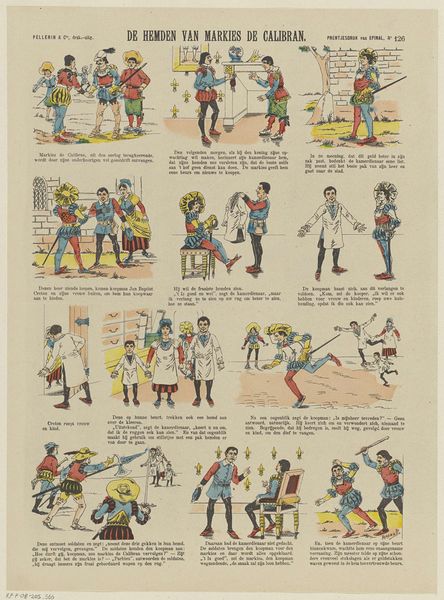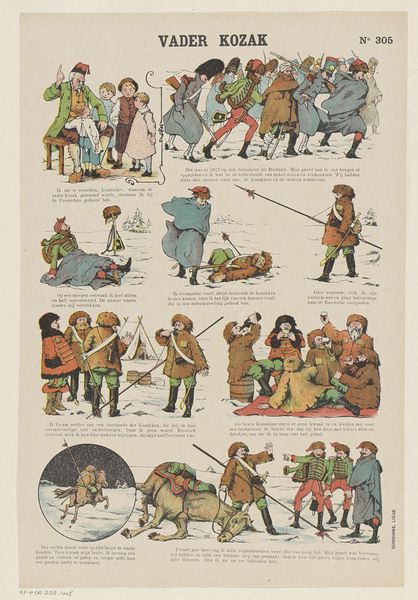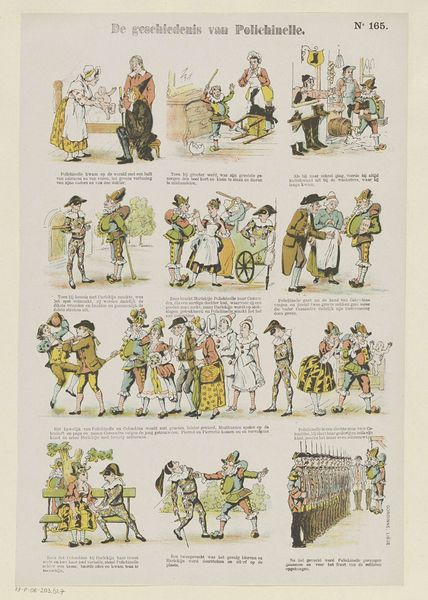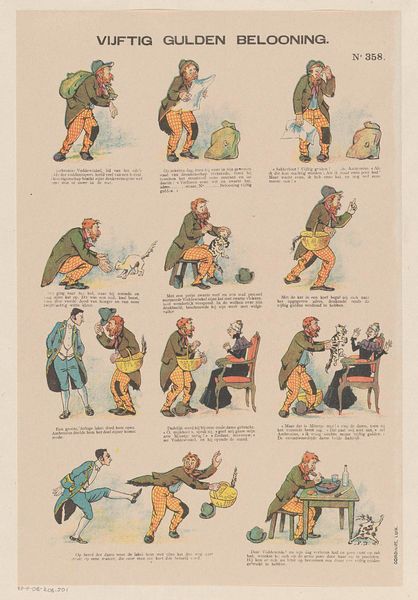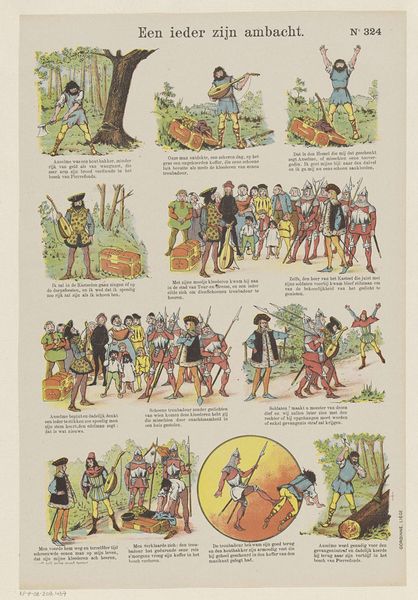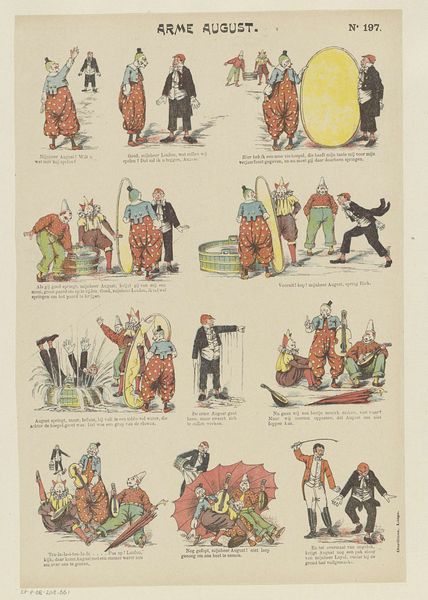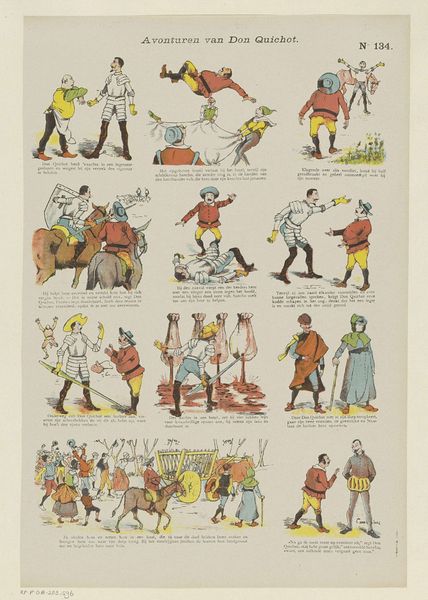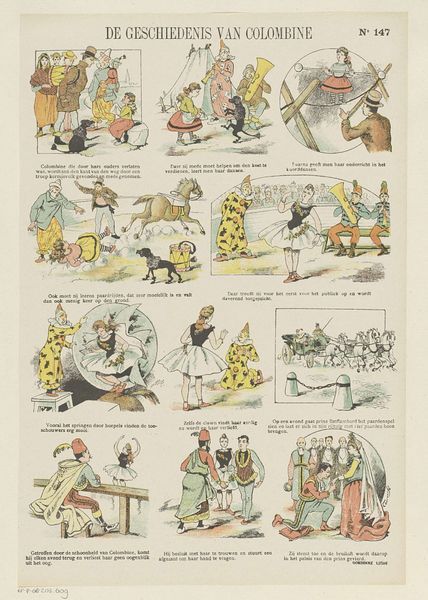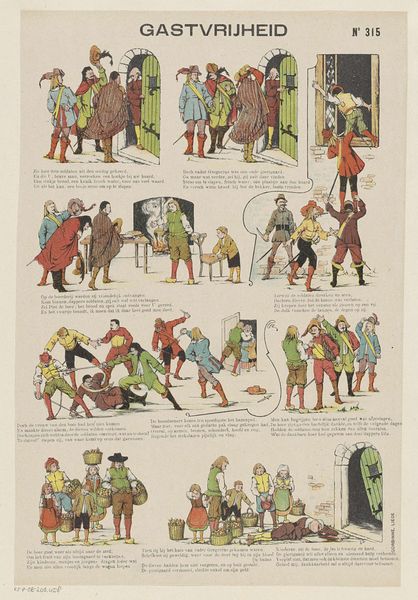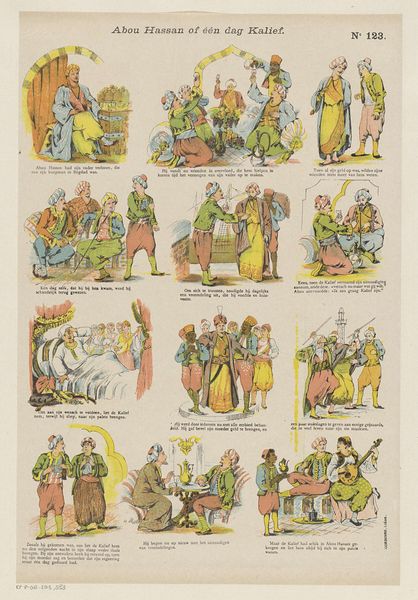
drawing, lithograph, print, paper
#
drawing
#
narrative-art
#
lithograph
# print
#
caricature
#
paper
#
folk-art
#
orientalism
Dimensions: height 368 mm, width 265 mm
Copyright: Rijks Museum: Open Domain
Curator: What jumps out at you about this lithograph? It's entitled "De wraak van een zwarte man," or "The Revenge of a Black Man," made sometime between 1876 and 1890 by Michelet. The piece utilizes drawing on paper and has elements of both folk art and caricature within an Orientalist style. Editor: The most immediate impression is of… awkwardness. The composition is so busy, a kind of repetitive, almost wallpaper-like pattern using some really troubling stereotypes. I’m curious about the paper quality and the lithographic process, because there is a mass produced feel to it. Curator: The visual language certainly reflects the racist tropes common in the 19th century, showing caricatured figures enacting scenes of, well, revenge, it seems. I’m struck by the almost playful nature given the underlying themes, reflecting the time's complicated attitudes towards race and power. Do you think there is something archetypal at work here? The jester figure for example… Editor: Archetypes or rationalizations? I wonder about the economics of the print. Was it widely distributed, affordable? What kind of labor went into its production? The multiple panels give it almost a comic-strip quality, making it feel almost like a piece of disposable media made to reinforce particular social hierarchies and beliefs through visual shorthand. Curator: And consider how powerful that shorthand would be – visual signifiers deeply rooted in the collective imagination, continually reinforced through images like these. It speaks to a wider cultural narrative, and a disturbing continuity. Editor: Precisely. The layering of stereotype and readily available material created an ideological device circulated within a burgeoning print market. This isn’t “high art” so to speak, but it did immense cultural work shaping perception, which feels more relevant than some idealised notion of aesthetics. Curator: Seeing these historical threads does makes its impact resonate in the present in ways that make this print all the more potent, if appalling. Editor: Yes, a chilling example of art participating in – and shaping – social realities of its time. It is something we should remember in order to understand the legacy and perpetuation of systemic prejudice.
Comments
No comments
Be the first to comment and join the conversation on the ultimate creative platform.
